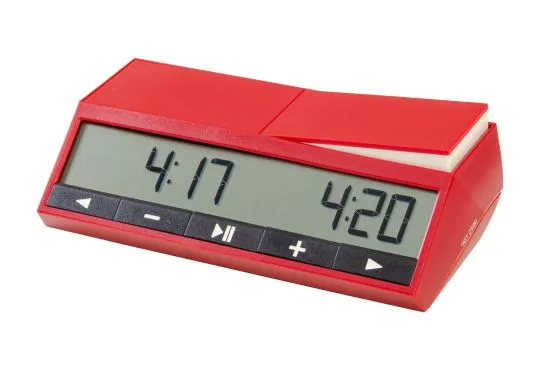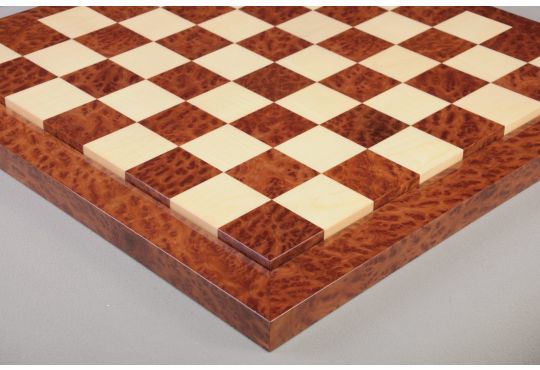Know Your Chess Pieces’ Value to Triumph
Every chess player learns their chess pieces' value early. This value system is one of the fundamentals we must know if we are to avoid losing material.
When you know that a rook is worth five points and a bishop three points, you won’t exchange a rook for a bishop without considering other factors. The chess pieces’ value is the foundation of our play as beginners.
In light of this, getting a firm grasp on the chess pieces’ value is essential. More important is getting a genuine value for the chess pieces.
There are times when their value increases and, at other times, diminishes. The knowledge of your chess pieces’ value must be used wisely.
Table of contents
The Chess Pieces’ Value System for Beginners
As beginners, we are taught the following value for our chess pieces:
- Queen - 9 points.
- Rook - 5 points.
- Bishop - 3 points.
- Knight - 3 points.
- Pawn - 1 point.
This value system is pretty close to giving us a realistic idea of our chess pieces’ value. Because of the complexity of chess, there are other factors to consider.
However, these values work well for beginners and are suitable for somebody only getting started in chess.

The New Chess Pieces’ Value System
American GM Larry Kaufman and others did a lot of research on the chess pieces’ value and suggested a different scale.
- Queen - 10 points.
- Rook - 5.25 points.
- Bishop - 3.55 points.
- Knight - 5.45 points.
- Pawn - 1 point.
The new values reflect our deeper understanding of chess. The two rooks remain slightly stronger than a queen (10.5 points versus 10 points).
People talk about a bishop-pair advantage, but you won’t hear anybody mention a two knights advantage. Thus, it makes sense to rate the bishops slightly higher than the knights.
The new point system more accurately reflects the advantage of the bishop pair over a rook.
-
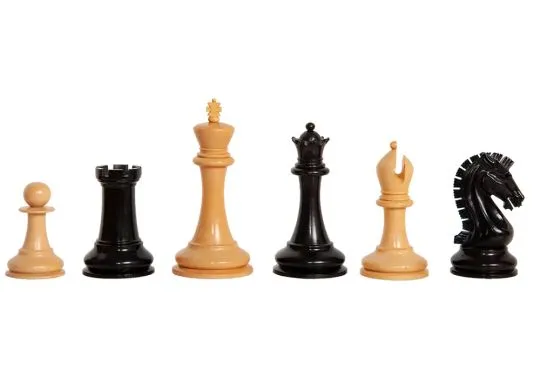 Free Worldwide Shipping
The 2024 Saint Louis Rapid & Blitz Official Series Chess Pieces - DGT-Enabled These Are The Actual Pieces Used At The Tournament! Only 5 Chess Sets Are Available!
Free Worldwide Shipping
The 2024 Saint Louis Rapid & Blitz Official Series Chess Pieces - DGT-Enabled These Are The Actual Pieces Used At The Tournament! Only 5 Chess Sets Are Available!Starting at $2,495.00
To $3,495.00
-
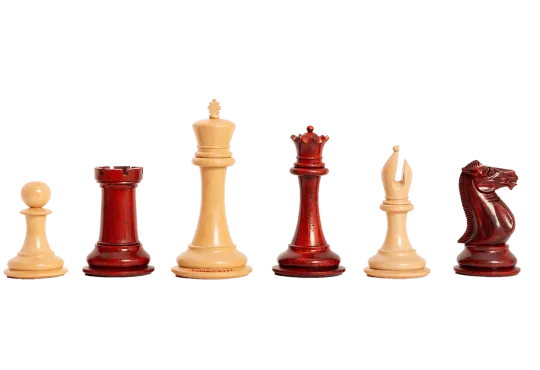 Free Worldwide Shipping
The Forever Collection - The 1849 Collector Series Luxury Chess Pieces - 4.4" King FEATURES A LIFETIME WARRANTY AGAINST HAIRLINE CRACKS
Free Worldwide Shipping
The Forever Collection - The 1849 Collector Series Luxury Chess Pieces - 4.4" King FEATURES A LIFETIME WARRANTY AGAINST HAIRLINE CRACKSStarting at $995.00
To $7,765.00
-
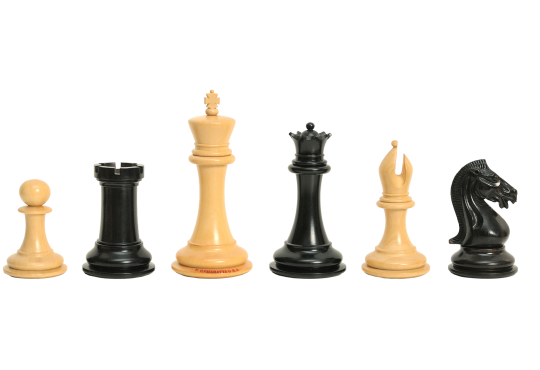 Free Worldwide Shipping
The Forever Camaratta Collection - The Selene Collector Series Chess Pieces - 4.4" King FEATURES A LIFETIME WARRANTY AGAINST HAIRLINE CRACKS
Free Worldwide Shipping
The Forever Camaratta Collection - The Selene Collector Series Chess Pieces - 4.4" King FEATURES A LIFETIME WARRANTY AGAINST HAIRLINE CRACKSStarting at $1,495.00
To $8,185.00
Instead of 6 points for two bishops over 5 points for a rook, we get 7.1 points for 5.25 points. The difference has increased from 1 point to 1.85 points.
Of course, beginners and many post-beginner players are going to struggle to get the most from having the bishop pair advantage. That is why the old values seem better to reflect the chess pieces’ value for beginners.
Placing a Value on Time in Chess
Time plays a pivotal role in all phases of a chess game. The most obvious example of the value of time is gambit openings in chess.
Although the importance of time is easy to see in the opening, it plays a vital role in middlegame attacks and pawn races in the endgame as well. A single tempo can mean the difference between earning a draw and suffering defeat.
In the opening, it helps a player understand the importance of time by placing a value of 0.25 points on each tempo.
Giving time a value makes the concept more concrete for a player and works well in our age of chess engines. Players will quickly understand if you say something like, “Making a non-developing move is the same as giving your opponent a 0.25 advantage.”
The reverse is also true and can be extremely helpful in deciding if you want to play a gambit or a particular opening. Will you play the Scandinavian Defense, knowing your queen might move three times only to return to her starting square?
-
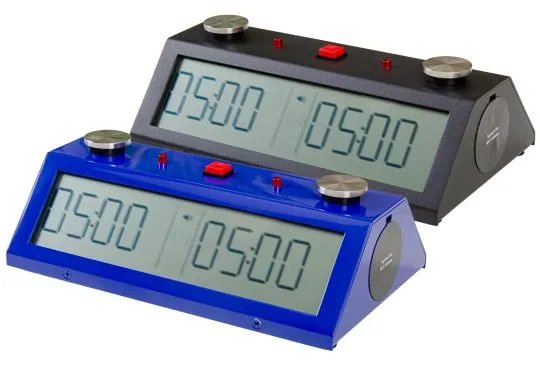 Tap N Set Pro Digital Chess Clock The Official Chess Clock of the US Chess Federation - The World's Only Smart Phone Programmable Clock
Tap N Set Pro Digital Chess Clock The Official Chess Clock of the US Chess Federation - The World's Only Smart Phone Programmable ClockStarting at $124.95
To $129.95
Are you willing to give white a 0.75 advantage, or would you rather play the Caro-Kann? And if you choose the Caro-Kann, is meeting the Advance Variation with 3…c5 worth the 0.25 point?
You will feel more confident sacrificing a pawn and playing gambit openings if you keep track of the tempi you gain. When you give up a pawn and gain three tempi, you effectively only sacrifice 0.25 points of material.
A good gambit against the Sicilian Defense is the Wing Gambit. Enjoy this crushing victory by white, including a double-bishop sacrifice.
When playing the Wing Gambit, always be sure to cover the crucial e5-square to prevent …Qe5+, which wins the rook on a1.
Factors Impacting the Value of Your Pieces
The chess pieces’ value is easy to determine in an ideal world or balanced chess position. All outside factors being equal, a queen is worth almost twice as much as a rook.
However, this raises the question of why exchange sacrifices get played so often? And what about other sacrifices?

These questions are best answered by adding a vital ingredient in determining the chess pieces’ value - the dynamic value of each piece.
Determining if your opponent has time to bring pieces over to defend their king is one of the most straightforward factors to calculate. A sacrifice will usually work when he has all his pieces on the queenside, and you are attacking the kingside.
Other factors that reduce the chess pieces value are:
- Harmony - do the pieces support each other and defend or attack crucial squares?
- Mobility - how active are your pieces?
- Development - are all your pieces in play?
Take a look at the practical value of Black’s f8-bishop and h8-rook in this game between Maxime Vachier Lagrave and Ding Liren. Neither piece made it into the game even though it lasted 39 moves.
Playing against a 2700-rated player is challenging enough with all your pieces. Giving them rook and bishop odds can only end badly for you.
Maxime Vachier-Lagrave (2722) - Ding Liren (2707), 2013.04.22, 1-0, Alekhine Memorial, Paris/St Petersburg FRA/RUS.
The Importance of Space in Chess
The material value of your pieces is important, but it is not the only thing of importance in chess. As Maxime Vachier Lagrave showed us, mobility is extremely valuable in chess as well.
In chess, all the valuable aspects of the game must work together if you are to have a good position. Mobility is made easier if you have more space because your pieces will not get in the way of each other.
For example, if your pawns have advanced to the fifth rank, you can use the third rank to develop pieces and the fourth rank to swing a rook or move a queen across the board.
Moving pieces across the board is more challenging if your knights are developed to the third rank behind pawns on the fourth rank.
Most chess players learn early that the side with less space benefits from piece exchanges. Of course, your opponent is likely to avoid exchanges if they have the space advantage.
There are two other ways you can fight against the space advantage. You can use pawn breaks, and you can sacrifice a piece.
Sacrificing a piece is something to consider carefully, but along with gaining you breathing room, it will often earn you the initiative. Do not discount the surprise factor inherent in sacrificing a piece simply to gain space.
-
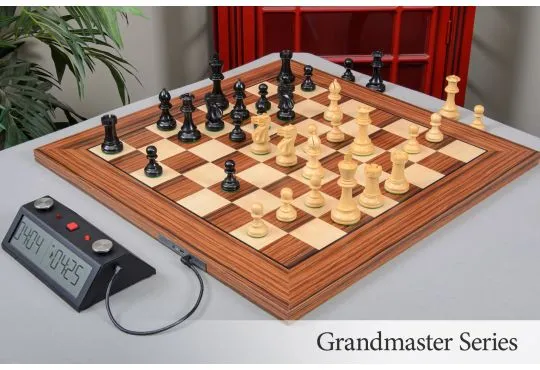 Free Worldwide Shipping
The House of Staunton Electronic Sensory Chess Board (E-Board) - Without LEDs
Free Worldwide Shipping
The House of Staunton Electronic Sensory Chess Board (E-Board) - Without LEDsStarting at $695.00
To $1,119.95
-
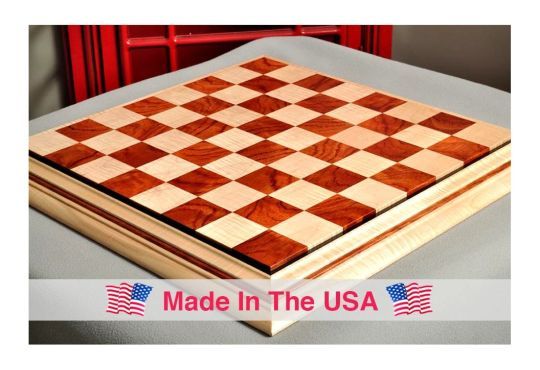 Free Worldwide Shipping
PRE-ORDER - Signature Contemporary II Chess Board - Curly Maple / Pomelle Bubinga - 2.5" Squares
Free Worldwide Shipping
PRE-ORDER - Signature Contemporary II Chess Board - Curly Maple / Pomelle Bubinga - 2.5" SquaresStarting at $1,695.00
To $1,774.95
When you sacrifice the piece, be ready to capitalize on any mistakes your opponent might make due to the changes in the position.
In the French Defense, black often concedes more space to white by allowing d4 and e5. Black then uses the pawn breaks …c5 and …f6 to free the position.
Take a look at how Morozevich tied down the white pieces by seizing lots of space on the queenside.
Dmitry Jakovenko (2710) - Alexander Morozevich (2755), 2007.12.18, ½ - ½, Russian Championship Superfinal Round 1, Moscow RUS
Final Thoughts
The chess pieces’ value is an important tool for every chess player, but it can become a hindrance. Think of these values as suggestions, and always remember to let the position guide you.
A rook is not worth much if there are no open files, and bishops are not influential in closed positions. That being said, do not rush to be rid of them until you have given thought to how the position might get opened up later in the game.
One of the biggest dangers of going by a points system is becoming locked in a materialistic mindset. Playing gambits will help you learn the value of intangibles like a lead in development and space.

Gambits can also help you become more comfortable playing with a material deficit. You don’t need to play them all the time or for an extended time.
Once you have freed yourself from a materialistic mindset, go back to playing more orthodox openings. The lessons learned from playing gambits can serve you well in complex middlegames.
Another way to use the points system in your games is to keep in mind many players, especially beginners and post-beginners, need a five-point material advantage to win a game. Knowing this, you might not rush to resign if you lose a minor piece.
A king and a rook (a five-point advantage) can checkmate a lone king, but a checkmate cannot be delivered by a king and bishop or knight (a three-point advantage).
Perhaps you will find a way to assign a point score to the intangibles of chess. As you gain experience playing with a space advantage, you could give it a point score - +1 if you control the first four ranks.
Author: This piece was originally written by Shaun Sedice
wo rooks are slightly stronger than a queen, and two bishops are stronger than a rook in an open position.


